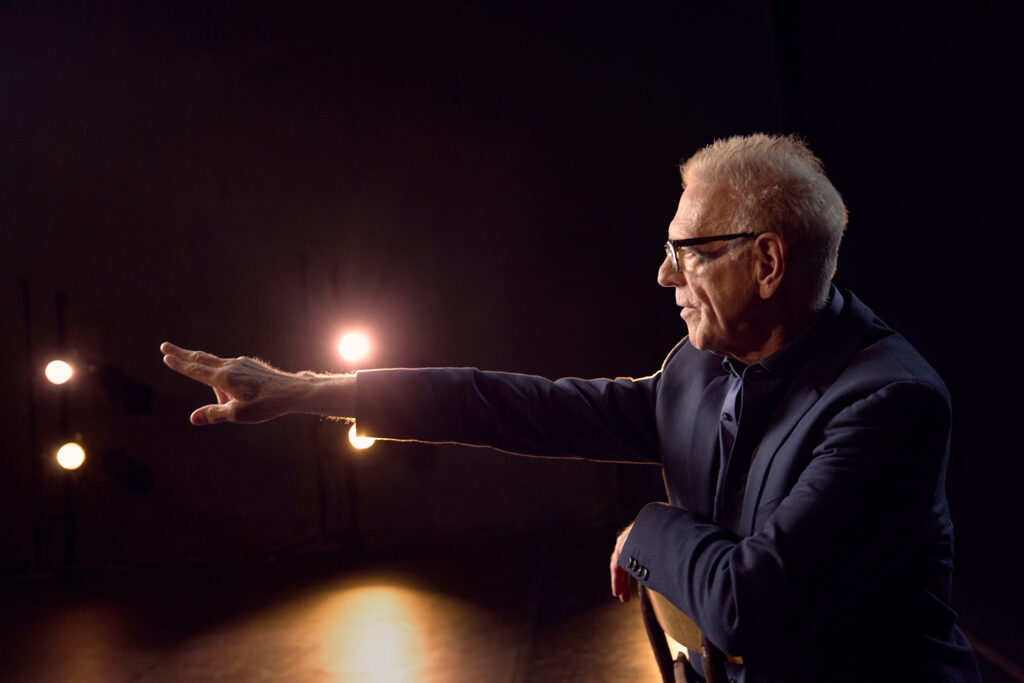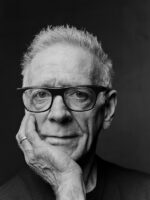Written By Mary Daily | Photos by Jeremy Jackson (this article first appeared in UCLA Magazine, April 2, 2024).
If you were an actor, how would you prepare to play a particular character? You would try to duplicate the look: the facial features, the hairstyle, the costume. You’d practice emulating their voice: accent, intonation, resonance and inflection.

But that would be just the start, the surface. What about movement? As the character, how do you carry yourself? How do you sit, stand, walk? Do you slump, or stand tall? How do you shake hands? Are your gestures large and sweeping, or small and precise? What is your gaze like?
Voice coaches and stylists have been well known and ubiquitous since the founding of Hollywood. But coaching people how to … move? Enter retired UCLA professor Jean-Louis Rodrigue, an almost 40-year veteran of both the School of Theater, Film and Television and the Herb Alpert School of Music.

A master of movement training, Rodrigue has now shared his knowledge in Back to the Body: Infusing Physical Life Into Characters in Theatre and Film, a manual based on his years of experience. The book, published last spring, guides readers to use their bodies and energy as a basic point of departure for performance and expression and promises to teach actors how to “create a unique, honest and riveting character.”
An internationally acclaimed acting coach, the Moroccan-born Rodrigue specializes in movement and physicality — a critical but often overlooked dimension that determines whether a character appears authentic. His teachings emphasize awareness of the body, as he leads actors in finding fluidity of ease, power, precision and passion as they learn to embody the character. His clients have ranged from Keanu Reeves, Sir Ian McKellen and Christian Bale to Juliette Binoche, Hilary Swank and Margot Robbie. He’s even worked with Cirque du Soleil.
“I encourage actors to do what they do in the best possible way,” he says, “and to serve the story they are telling.”
Via intensive one-on-one sessions with clients, as well as workshops taught around the world, Rodrigue focuses on the elements that make an actor charismatic and clearly expressive: developing kinesthetic awareness of the body; coordinating the breath and voice to a script; being in space in the world of the story. “Every gesture has enormous implications in telling a story and creating a character,” he says. “Acting is visceral. It’s literally in your organs. It’s primitive and raw. The key to authenticity is for the actor to commit to the character as if their life depended on it.”
Rodrigue always calls upon animal behavior in his training. When he was working with Leonardo DiCaprio as the actor was preparing to play J. Edgar Hoover, Rodrigue chose the hawk as a representation of the animal side of Hoover’s behavior. Hoover was a man obsessed with details, a detective who noticed everything in his line of sight. Hence the hawk, which keeps an eye on the horizon as it flies. Rodrigue says that in playing a role, an actor remains about 85% human — but will take on 15% animal energy to finish the job. DiCaprio, he says, “completely changed his behavior” as he prepared to play the role.
“I tell every client their body is their instrument, and they must treat it like a fine Stradivarius,” the master says. “Use it with modulation and economy, and it will serve you well.”



